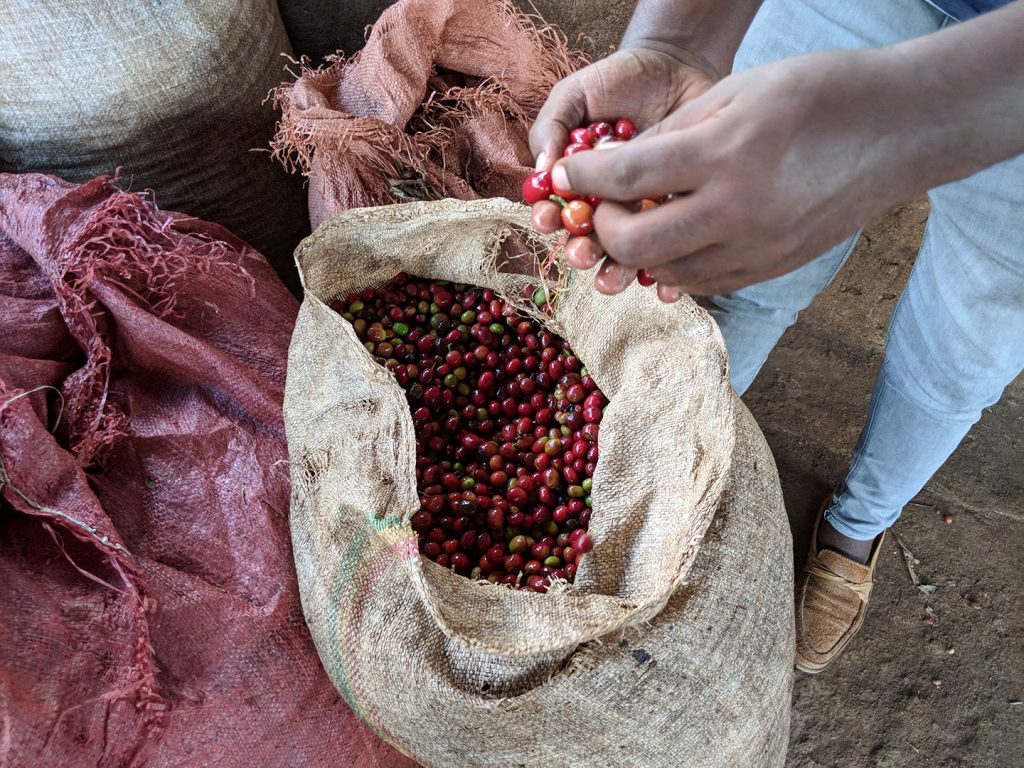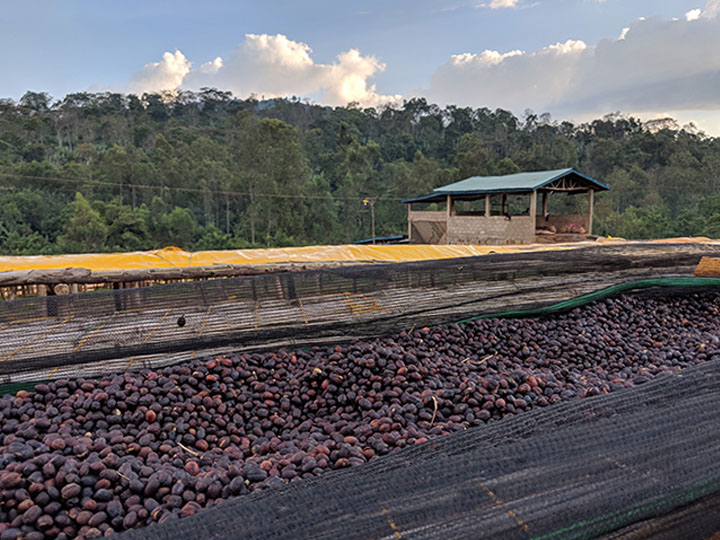There are a variety of different coffee processes, but most of them stem from two main types: natural or washed.

Sharp to mellow, fruity to nutty, coffee has a range of flavours across the board. One variable to consider is how the beans are processed before they are ready to roast.
What are coffee processes?
Let’s quickly go over the basic anatomy of a coffee cherry before we continue. A coffee cherry consists of 7 parts, the outer skin, pulp, pectin layer, parchment, silver skin, the bean and the center cut. Coffee processes are designed to remove the mucilage (or squishy bits) and parchment from around the bean so they can be ready to be roasted into your favourite coffee. How can this affect your coffee’s flavour? Let’s dive into the different processes to find out.

Natural Process doesn’t use water, hence why it is also known as the dry process. Cherries are checked for ripeness and quality before being put on raised beds or patios to dry. The outer layer remains on the bean during this process allowing the enzymes to interact with the fruit surrounding the coffee bean as they dry. This gives the beans a fruitier taste. When the cherries have fully dried, which can take between 3-6 weeks depending on the climate, they are hulled removing the dried fruit and parchment from the bean. Natural processing can be a bit tricky since the cherries are still whole while drying, they must be carefully raked through to ensure any mold or overripe cherries are removed. Any missed cherries could be disastrous; potentially affecting the final flavour and ruining an entire batch. The natural process isn’t as widely used as the washed process; however, it is commonly seen in areas with less access to water or drier climate such as Ethiopia.
Natural processing can be a bit tricky, since the cherries are still whole while drying, they must be carefully raked through to ensure any mold or overripe cherries are removed.
The washed process is also known as the wet process, which makes sense since it involves a lot more water. The coffee cherries are harvested and the fruit is removed from around the bean. Within 24 hours of the cherries being picked, they are rinsed and put into a bath of water for a float test. Any cherries that float are removed. The cherries then go through a depulper to remove the fruit of the cherry, leaving only the mucilage on the bean. Next, they go into fermentation tanks to help breakdown the mucilage. This is generally a 12-36 hours process but there has been a lot more experimentation recently, where producers are fermenting for longer times. After the fermentation is complete, the washing begins. The beans are put into a tub of fresh water and gently agitated to remove the leftover mucilage. This is repeated multiple times until all mucilage is removed and the beans are clean. The washed beans are then place on patios or beds and raked multiple times a day to ensure even drying. When the beans are finally dried, they are hulled to remove the parchment layer before being sent to be graded and bagged. The washed process creates a clearer, more vibrant taste; showcasing the flavour of the bean without the integration of the surrounding fruit.
One process isn’t necessarily better than the other. Both ways bring a unique taste and a beautiful aroma to your cup when combined with a high-quality bean. Trying beans that have been processed differently is a fantastic way to experience new taste profiles and really get to know your coffee.


